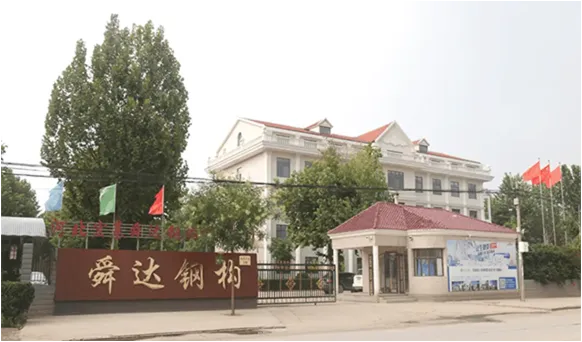- Afrikaans
- Albanian
- Amharic
- Arabic
- Armenian
- Azerbaijani
- Basque
- Belarusian
- Bengali
- Bosnian
- Bulgarian
- Catalan
- Cebuano
- Corsican
- Croatian
- Czech
- Danish
- Dutch
- English
- Esperanto
- Estonian
- Finnish
- French
- Frisian
- Galician
- Georgian
- German
- Greek
- Gujarati
- Haitian Creole
- hausa
- hawaiian
- Hebrew
- Hindi
- Miao
- Hungarian
- Icelandic
- igbo
- Indonesian
- irish
- Italian
- Japanese
- Javanese
- Kannada
- kazakh
- Khmer
- Rwandese
- Korean
- Kurdish
- Kyrgyz
- Lao
- Latin
- Latvian
- Lithuanian
- Luxembourgish
- Macedonian
- Malgashi
- Malay
- Malayalam
- Maltese
- Maori
- Marathi
- Mongolian
- Myanmar
- Nepali
- Norwegian
- Norwegian
- Occitan
- Pashto
- Persian
- Polish
- Portuguese
- Punjabi
- Romanian
- Russian
- Samoan
- Scottish Gaelic
- Serbian
- Sesotho
- Shona
- Sindhi
- Sinhala
- Slovak
- Slovenian
- Somali
- Spanish
- Sundanese
- Swahili
- Swedish
- Tagalog
- Tajik
- Tamil
- Tatar
- Telugu
- Thai
- Turkish
- Turkmen
- Ukrainian
- Urdu
- Uighur
- Uzbek
- Vietnamese
- Welsh
- Bantu
- Yiddish
- Yoruba
- Zulu
Nov . 21, 2024 22:36 Back to list
The Evolution of Industrial Buildings A Journey Through Time
Industrial buildings, once seen as mere functional spaces, have transformed significantly over the decades, reflecting the advancement of technology, changes in manufacturing processes, and the evolving landscape of urban environments. From the early factories of the Industrial Revolution to the sleek, sustainable structures of today, the evolution of industrial buildings offers a fascinating insight into the intersection of architecture, engineering, and industry.
In the 18th and 19th centuries, the Industrial Revolution marked a significant turning point in the design and purpose of industrial buildings. Factories were constructed primarily for efficiency and utility, with an emphasis on maximizing production capabilities. These structures were often made of brick and wood, featuring large windows to provide ample daylight for workers and to facilitate the use of steam-powered machinery. An iconic example from this era is the cotton mills of England, which epitomized industrial architecture with their towering smokestacks and expansive floor layouts.
As the 20th century rolled in, industrial building design began to embrace new materials and technologies
. The introduction of reinforced concrete and steel frames allowed architects to create larger and more durable structures. Factories expanded in size with the emergence of assembly line techniques, leading to the design of sprawling complexes such as automotive plants. Notably, the Ford River Rouge Complex, built in the 1920s, is a testament to this era's architectural innovation, featuring an integrated design that brought together manufacturing, assembly, and shipping all under one roof.industrial building

Post-World War II, the demand for industrial space surged due to rapid economic growth and globalization. This period saw the rise of the modern warehouse, characterized by their functional flat-roof designs and expansive open spaces optimized for storage and distribution. Additionally, the concept of “Big Box” stores emerged, reflecting the needs of consumerism and retail logistics.
In recent years, there has been a notable shift towards sustainability and adaptive reuse in industrial building design. Architects and developers now prioritize energy-efficient systems, sustainable materials, and green building practices to reduce the environmental impact of industrial operations. The revitalization of old factories into mixed-use spaces for dining, shopping, and living is a growing trend, merging the industrial aesthetic with contemporary urban life. An example of this transformation is the Tate Modern in London, a former power station turned art museum, which showcases how industrial spaces can be reimagined for cultural enrichment.
Moreover, advancements in technology, such as automation and smart manufacturing, have also influenced the design of industrial buildings. Contemporary factories are being equipped with advanced robotics and IoT-enabled systems that optimize production processes. As a result, modern industrial buildings are not only more functional but also more adaptable to the changing needs of the industry.
In conclusion, the evolution of industrial buildings reflects the dynamic relationship between industry and architecture. From the utilitarian designs of the past to the innovative and sustainable structures of today, these buildings tell a story of progress and adaptability. As industries continue to evolve, so too will the spaces they inhabit, paving the way for a future where functionality, sustainability, and aesthetics coexist harmoniously. The journey of industrial buildings is far from over; it is an ongoing narrative that continues to shape our urban landscapes and influence our way of life.
-
How Do Prefabricated Steel Structures Transform Modern Construction?
NewsJul.14,2025
-
How Do Prefabricated Metal Buildings Redefine Modern Construction?
NewsJul.14,2025
-
How Do Prefab Insulated Metal Buildings and Steel Structures Revolutionize Modern Construction?
NewsJul.14,2025
-
How Do Pre - Engineered Steel Structures Redefine Modern Construction?
NewsJul.14,2025
-
Advancing Modular Construction with Prefabricated Metal Structures
NewsJul.14,2025
-
Advancing Industrial Infrastructure with Prefabricated Steel Solutions
NewsJul.14,2025
Products categories
Our Latest News
We have a professional design team and an excellent production and construction team.












